Buying Guides August 18, 2022
When it comes to buying an ATV or four-wheeler to fit your needs, there are several factors to consider. From pricing, financing options, monthly payments, brand, model and usage – this buying guide will give you the tools to make a better-informed purchase decision. As the recognized world leader in off-road vehicles, Polaris is here to help you find the ATV or four-wheeler that’s right for you.
A four-wheeler can deliver the same trail thrills, adventure and capabilities as a side-by-side, and for many is the ideal entry vehicle to the off-road world. This guide will not only help you find the right ATV, but also make a better informed decision on ATV accessories, wheels and tires. Lastly, we’ve outlined basic ATV / four wheeler price guidelines including the advantage of affordable monthly payments.
Now, let’s find your next off-road vehicle.
The four wheeler was born not long after the three wheeler or ATC disappeared. Featuring four, low pressure all-terrain tires, high-ground clearance and a robust suspension to tackle rugged terrain, the ATV/4 wheeler has become one of the most popular off-road vehicles in the world. Most tout four-wheel drive capability, which allows an ATV or four wheeler to travel over rough ground, drive through deep mud and water, and climb rocky hillsides with relative ease. They are also very adept at hauling and towing large loads over difficult terrain. In short, the ATV is just that, an all-terrain vehicle that can work hard, play hard and can open up a new world of off-road adventure.
Equally appealing are the varied ways an ATV can be used. They include:
This incredible versatility is what made the ATV one of the most popular off-road vehicles in the world. Yet, it’s the recreational side that attracts so many to the four wheeler market. Popular ATV’s like the Polaris Sportsman offer a level of performance, utility, versatility and affordability that makes it ideal for hundreds of tasks and trail riding adventures. Throughout North America there are thousands of miles of trails where you can experience the off-road freedom only an ATV can deliver.
Yet, it’s the recreational side that attracts so many to the four wheeler market. Popular ATV’s like the Polaris Sportsman offer a level of performance, utility, versatility and affordability that makes it ideal for hundreds of tasks and trail riding adventures. Throughout North America there are thousands of miles of trails where you can experience the off-road freedom only an ATV can deliver.
When ridden properly and after taking an ATV or 4 wheeler riding course, these vehicles can be enjoyed by riders of varying skill levels. So, which one is right for you?
It’s important to note when it comes to buying an ATV there are many different models to choose from, but most can be divided into a few key categories or types of quads.

Along with individual designs and features, most ATVs or four wheelers offer a broad range of power options. How much power you want or need is dependent upon how you want to use the ATV, what kind of rider you are, your experience level and how much you want to spend. While youth 4 wheelers are powered to match the age and skill level of the rider, full-size models are available in a wide range of power offerings. If hauling or towing big loads is on your to do list, or if you’re an experienced rider who craves peak performance, a higher displacement and higher horsepower ATV or four wheeler is likely your best option.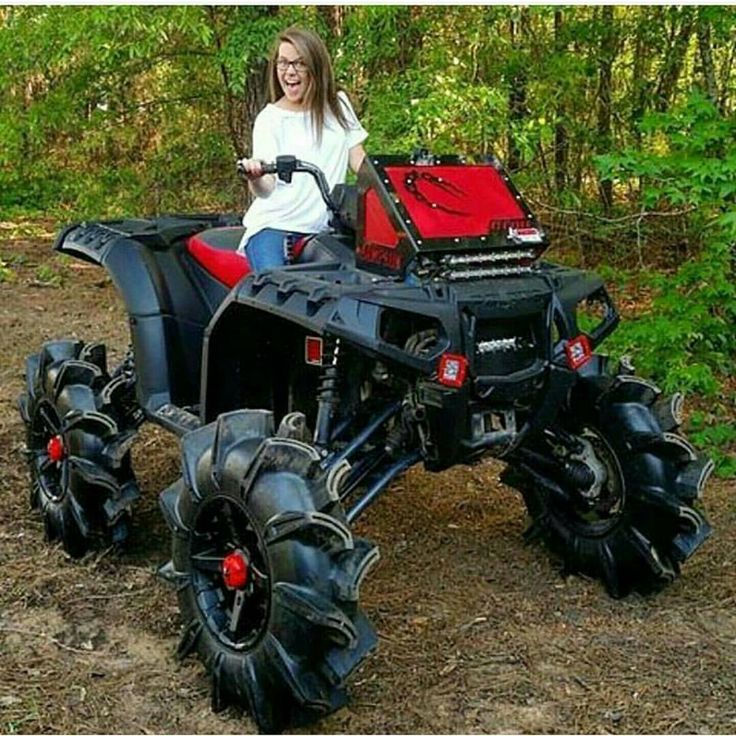 For other buyers who are more concerned about price or rideability for a wide swath of skill sets, a smaller displacement ATV, like the incredibly popular Polaris Sportsman 570, is probably the right choice.
For other buyers who are more concerned about price or rideability for a wide swath of skill sets, a smaller displacement ATV, like the incredibly popular Polaris Sportsman 570, is probably the right choice.
Utility or Rec/Utility ATVs are, as the name implies, designed for versatility and are geared towards a work first, play later usage.
Key features include:
Utility quads are arguably the most popular ATV in the industry. In some ways, nearly every ATV available in the market today is designed to deliver some degree of utility, yet these four wheelers are engineered to do more work and still deliver a great trail ride when the job is done.
Polaris has all the bases covered in this category starting with the Sportsman 450 HO and Sportsman 570.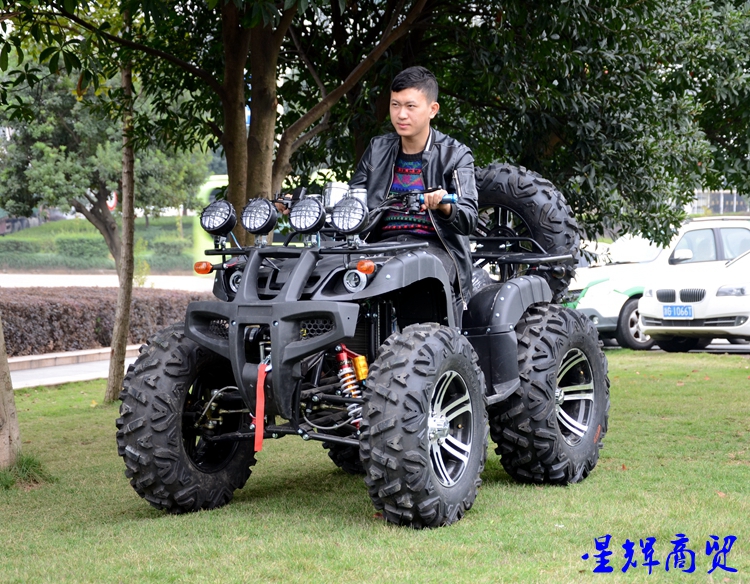 Both offering incredible value and feature legendary ride and handling, reliable and efficient electronic fuel injection and the industry’s quickest-engaging all-wheel drive system. The popularity of Sportsman is especially evident with the Sportsman 570 - the best-selling automatic 4 wheeler of all time.
Both offering incredible value and feature legendary ride and handling, reliable and efficient electronic fuel injection and the industry’s quickest-engaging all-wheel drive system. The popularity of Sportsman is especially evident with the Sportsman 570 - the best-selling automatic 4 wheeler of all time.
For those who want more by every measure, nothing compares to the Sportsman 850 and Sportsman XP 1000. Delivering the hardest working, smoothest riding performance with a rider active design, this duo delivers unstoppable power and capability.
These are performance first machines built to deliver key performance attributes:
Sport quads range from four-wheel drive models designed for trail performance to rear-wheel drive models geared towards racing on motocross tracks or in wide open deserts. This class once only contained pure-race type ATVs with clutches and manual shift transmissions.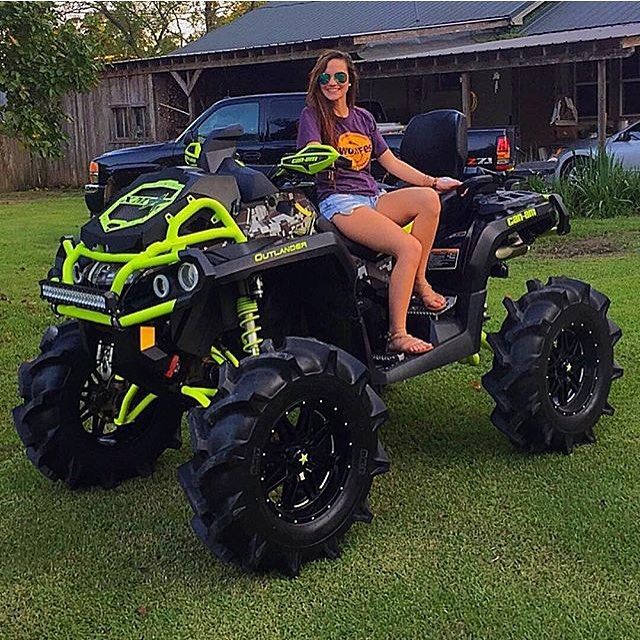 But as the ATV category grew, so too did the sport quad class to now include four-wheel drive trail models with automatic transmissions.
But as the ATV category grew, so too did the sport quad class to now include four-wheel drive trail models with automatic transmissions.
When it comes to all out performance in a Sport ATV, nothing compares to the Polaris Scrambler XP 1000S. With a wider stance than a “traditional” sport quad with more suspension travel, greater ground clearance and a tough as nails design, it delivers unprecedented stability and performance in the most challenging terrain.
Within the utility category there are several sub categories, but one that often receives special attention is hunting. Hunting quads often start life as a utility ATV and are then specialized with unique accessories, features and colors to deliver improved hunt category performance.
Some key hunting options and accessories include the following:
The final category is youth ATVs. Offered in various sizes and power options for specific age groups, youth quads are a fun way to get children and young riders into the sport with a sized right approach.
Offered in various sizes and power options for specific age groups, youth quads are a fun way to get children and young riders into the sport with a sized right approach.
A great example of this sized-right and powered-right approach can be found in the Polaris youth ATV line-up. The Outlaw 70 is designed for riders 6 and up and is packed with safety-features. Both the Outlaw 110 and Sportsman 110 are perfectly-suited for riders 10 and older. For more experienced youth riders, the Phoenix 200 and its 196cc engine delivers performance and safety features for riders 14 and older.
Used market pricing can be extremely difficult to navigate when buying an ATV, but the price should directly reflect the following:
Ultimately the used market is dependent upon what the current market will bear./ffab1b29f0dbe06.ru.s.siteapi.org/img/3185d1384f75f595200ffd5b4593ffbfb2f68da1.png) However, we know with more certainty how much a new ATV or four-wheeler will cost by looking at the manufacturer’s suggested retail price (MSRP). When we take a look at the big picture, full-size ATVs generally range anywhere between $6,000 (USD) and $16,000 (USD). Some of the most popular, best-selling and still very capable utility ATVs can be found for under $7,000.
However, we know with more certainty how much a new ATV or four-wheeler will cost by looking at the manufacturer’s suggested retail price (MSRP). When we take a look at the big picture, full-size ATVs generally range anywhere between $6,000 (USD) and $16,000 (USD). Some of the most popular, best-selling and still very capable utility ATVs can be found for under $7,000.
Financing a new four-wheeler is another option to consider. With manufacturers offering low interest rates and other incentives, you may find financing is a more affordable option to consider. Financing not only makes the ownership experience affordable to more people, it gives you the opportunity to enjoy a more powerful, feature-rich ATV.
Just as important as the ATV or 4 wheeler itself are the accessories you attach to truly elevate the capability, performance, convenience and looks of your ATV. The right accessories can help you specialize the capabilities and convenience of your ATV to match how you want to use the vehicle.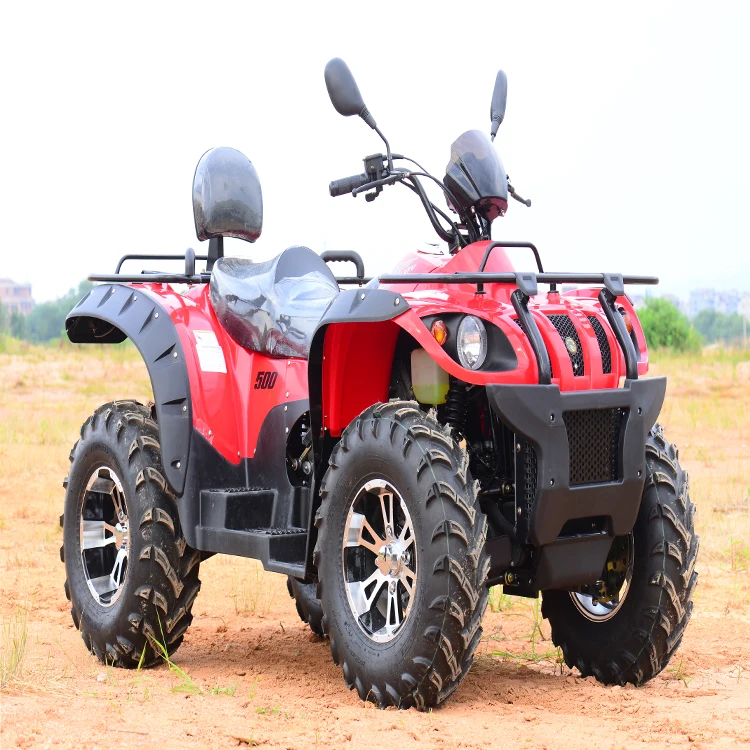 Popular accessory categories include:
Popular accessory categories include:
Since the appearance of the first ATV or 4 wheeler, it was the unique tires which truly defined the vehicle’s capabilities. Today, those large, low pressure “balloon tires” of yesteryear have been replaced by more specialized designs. They include:
Most tires found on ATVs and four wheelers from the factory feature a tread pattern for good all-around performance. However, as indicated by the categories listed above, there are hundreds of specialized tires are available in various tread patterns and sizes to enhance the performance and traction for various types of terrain.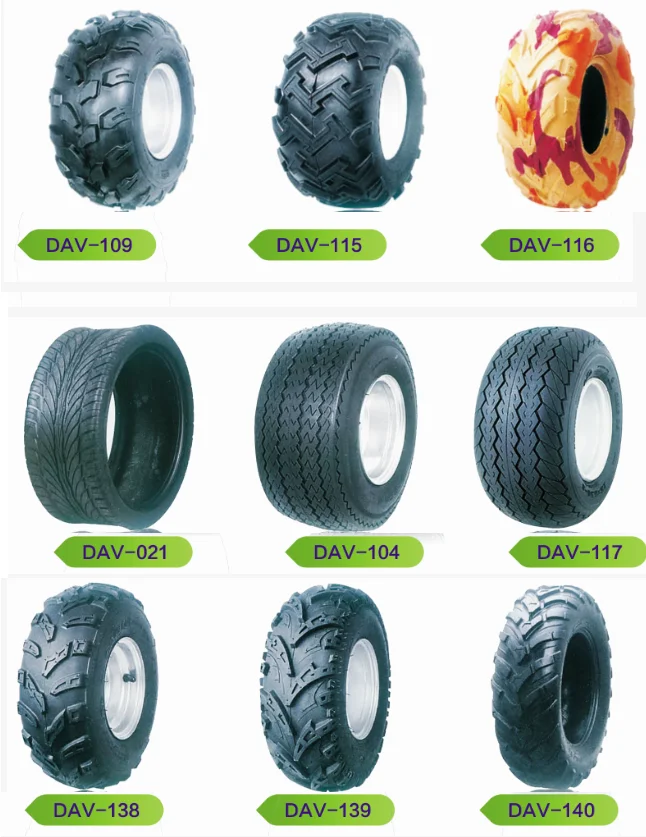 Serving as the vital contact patch between the ground and your ATV, having the right tire can truly define your ATV’s all-terrain capability.
Serving as the vital contact patch between the ground and your ATV, having the right tire can truly define your ATV’s all-terrain capability.
In short, when it comes to buying an ATV, do your homework. Determine what type of ATV model is right for how you plan to ride. From trail riding to general utility to hunting and so much more, the world of quads and four-wheelers is incredibly diverse. Now that this ATV buying guide took you a few steps closer to finding the vehicle right for you, let Polaris help you find the exact ATV vehicle you need for your purposes.
Updated: Aug. 27, 2019
Next Project›
Family Handyman
We asked our expert, Josh Fischer, owner of Unlimited Motorsports, New Prague, MN, to walk us through all the ATV pre-purchase inspection steps he performs for his customers. Skip the inspection and you could be in for some pricey repair bills before logging your first 100 miles.
Skip the inspection and you could be in for some pricey repair bills before logging your first 100 miles.
By the DIY experts of The Family Handyman Magazine
Shine your flashlight around each tread block and around both sidewalls, to look for cracks and missing chunks of rubber.
ATV tires age and crack just like car tires. Once they develop cracks, they’re dangerous to ride on. If one tire is cracked and has the same wear as the others, plan on replacing the complete set. That can easily cost upward of $480 with mounting labor.
Jack up one side and grab the tire at the 12:00 and 5:00 positions. Then rock the tire in and out. If you feel any play, you’re looking at a bad wheel bearing, a bad ball joint or both.
Severely worn ATV bearings and ball joints can separate in use, causing serious personal injury. Before they let go, you’ll notice sloppy steering and instability in turns.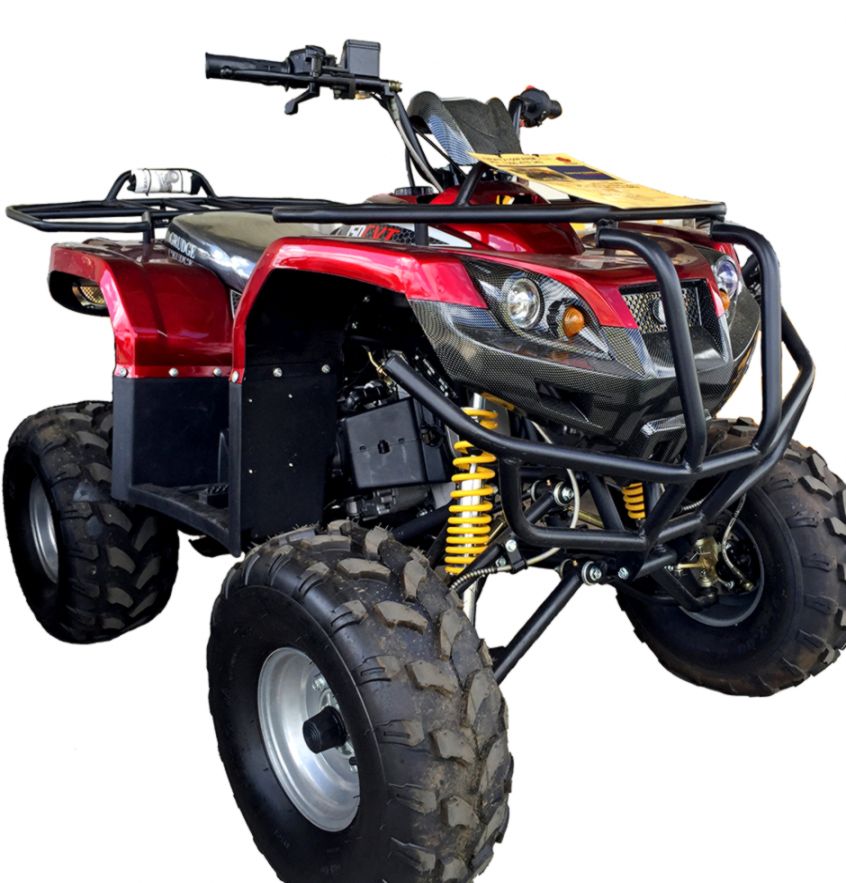 If one side is worn, chances are the other side is right behind. Ball joints cost $140 per side (installed), and wheel bearings run about the same. Check out common ATV repairs you might have to make later.
If one side is worn, chances are the other side is right behind. Ball joints cost $140 per side (installed), and wheel bearings run about the same. Check out common ATV repairs you might have to make later.
Look for moist areas around the top of the shock. If you see wet spots, run your finger over the area. If it’s oily, the shock is on its way out.
Worn shocks don’t dampen spring oscillations, so your tires spend more time in the air after each bounce. That dramatically reduces the machine’s stability. Leakage is a sure sign of wear. Shocks cost $150 each installed.
CV boots keep the grease inside the rotating joint. When a boot wears, it tears open between the pleats or at the band clamps. Then it flings the grease out of the joint and lets in water and sand that can destroy the joint. New boots cost $150 each installed. If you find sand or dirt in the joint, it’s most likely damaged and must be replaced. New CV joints cost $250 each installed.
New CV joints cost $250 each installed.
Check out all eight joints. Remove the splash guards (if equipped) and look for signs of grease on the inner and outer CV boot on each axle. Next, separate the pleats and check for small cracks or tears. Check the surrounding area for signs of grease that may have leaked from the clamps.
Oil leaks from the valve cover and head gaskets can cost plenty ($150 and $300). So check those areas before you buy. Wipe a clean rag around the head and valve cover gaskets. If the rag shows fresh oil, the gaskets need replacing.
Replacing an air filter doesn’t cost much. So if you remove the cover and see large accumulations of dirt, take it as a sign of poor maintenance. Also, if there are signs of mice or other rodents taking up residence, walk away from the purchase.
Check the pad condition and thickness.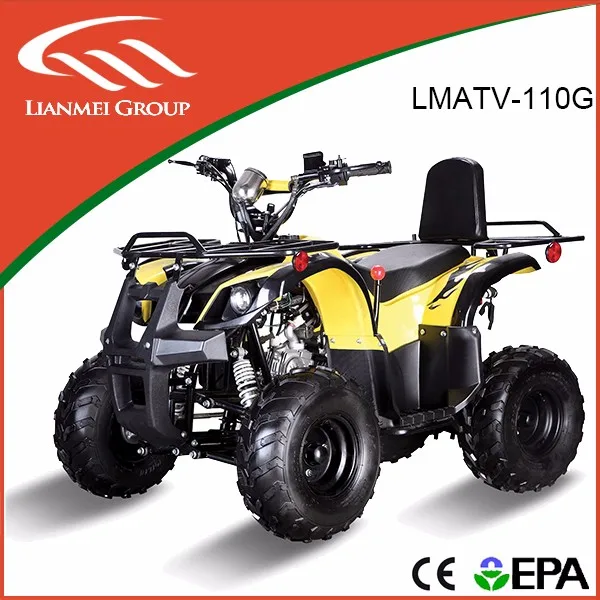 Inspect the rotor for deep gouges. And look for caliper leaks.
Inspect the rotor for deep gouges. And look for caliper leaks.
You can check the thickness of ATV brake pads with an inspection mirror and a flashlight, but ATV brake pads are so thin when new that it’s sometimes hard to see when they’re worn. We disassembled the brakes on this machine so you could see what we’re talking about. The new brake pad on the right is about 1/4 in. thick. The used pad below it still has more than the minimum 1/16 in. However, since ATV rotors are so expensive (almost $120 each), it’s never good to let them wear down that far and risk metal-to-metal contact.
Even if the pads look thick enough, the friction material may be cracked or delaminating from the backing plate. So it’s best to jack up each side and remove the wheel, caliper and pads to inspect the entire brake system.
A complete brake job costs about $175.
Pull the engine and transmission dipsticks and check for the proper level and appearance.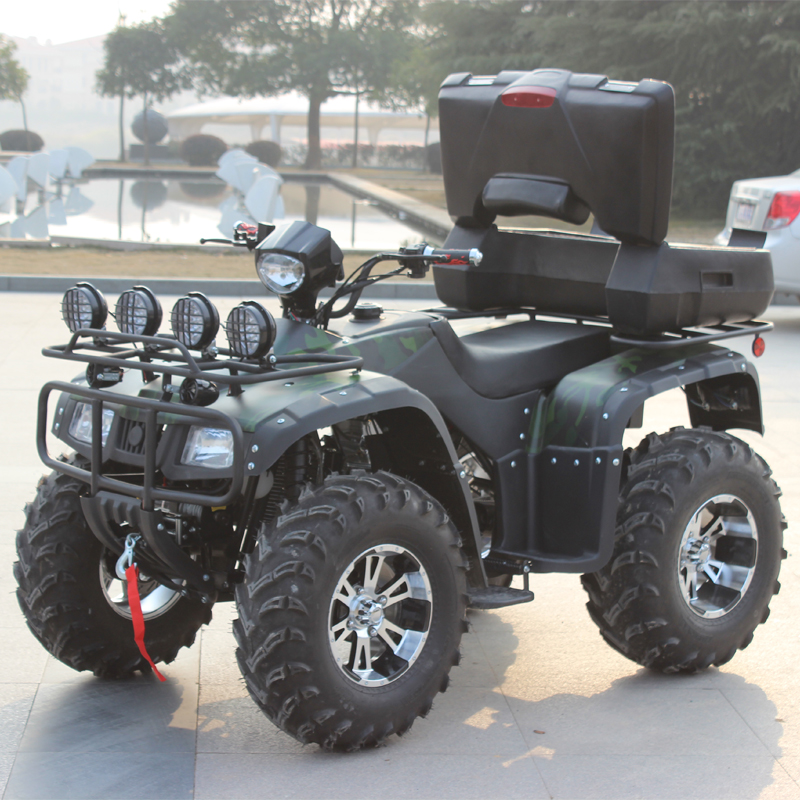 Look for metallic particles in the oil. If you see any, don’t buy the machine.
Look for metallic particles in the oil. If you see any, don’t buy the machine.
If the ATV uses a chain, check for sprocket wear. Replace the chain and sprocket as a set (about $300 parts and labor).
Learn how to change a motorcycle chain and sprockets.
Originally Published: August 27, 2019
ⓘ
The 21st century can be safely called office. Especially the last 5 years. More and more remote work appears, more and more specialties related to the IT sphere appear. And this means that people need not only more pants to wipe them on the office chair, but also more active forms of recreation, so as not to grow roots in the floor of the office or their own home. One of the most actively gaining popularity types of recreation is quad biking. It is good because it will suit absolutely everyone: both lovers of easy walks in the forest or the coast, and those who crave thrills in impenetrable mountains, deserted fields and swamps.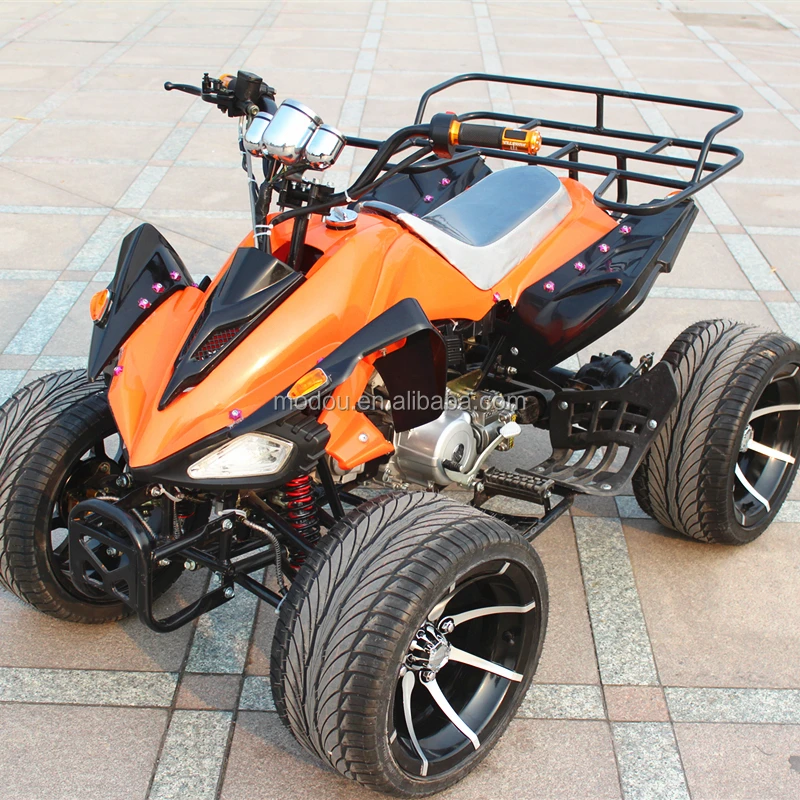
If this is going to be your first ATV, then you can start with simple budget models, since you still won’t feel the difference now. And in order to spend a minimum of time on the purchase, keep five important tips for buying a quadric without a headache.
This is important to decide well before buying. If you have decided to ride this frisky iron pony for the first time, then it is preferable to opt for a new model.
First, the dealer always gives a guarantee. This will save you from problems in the event of a breakdown - you just drive the ATV to the service and experienced specialists will fix all the problems.
Secondly, an inexperienced quad rider will not be able to identify serious flaws or recognize technique after drowning. Water is not the best companion for any transport and, in most cases, it is necessary to change the engine or transmission, and this is exactly half the price of the entire “pony”.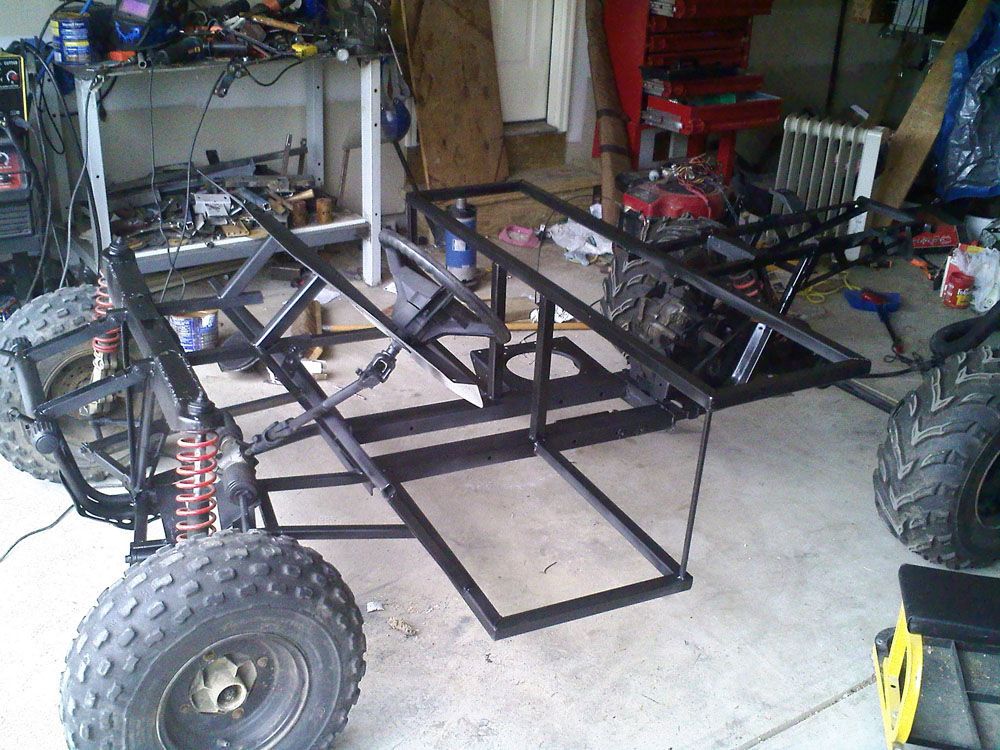
Thirdly, when you ride a certain amount of time and understand what you lack in a quadric and decide to buy a more powerful or comfortable one, it will be much easier to sell your predecessor. Equipment that had only one owner flies under the hammer much faster than the one that was in the hands of two or three people.
ATV . Single / double without a cab with a motorcycle landing (the passenger sits behind the driver) and a “bicycle” steering wheel. Such vehicles have a shorter wheelbase, which means better geometric cross-country ability and compact size. This makes the ATV more maneuverable, resistant to rollover. In addition, due to the mass of no more than 450 kg, it falls into the mud less.
SSV . Two- / four-seater with a cabin similar to a car. Inside: there are seats, a round steering wheel, a wide dashboard. The long wheelbase of such all-terrain vehicles increases stability and controllability at high speeds, the load capacity is much higher - up to 400 kg.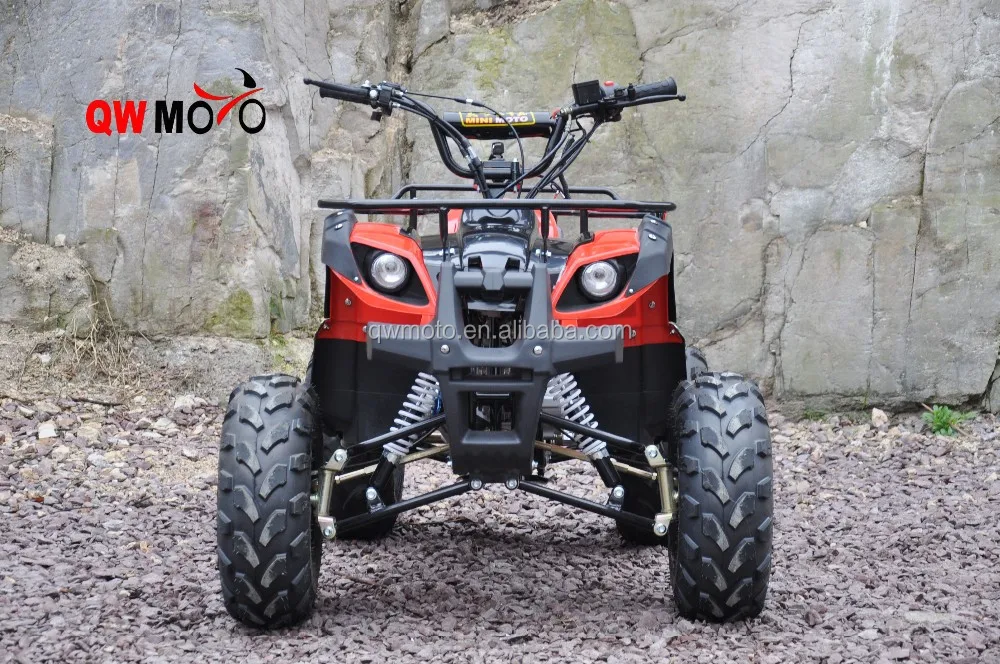 But such quads will not be so maneuverable and are more like a full-fledged off-road car.
But such quads will not be so maneuverable and are more like a full-fledged off-road car.
The choice depends on your goal: whether it will be solo “rides” or whether you are ready to take passengers on board for joint entertainment.
It is obvious that the leaders in the production of equipment are the Japanese. Brilliant Asians have thought through and invented literally everything. Moreover, it also works great! Therefore, we recommend that you look at Yamaha, Honda. These are reliable and durable ATVs that are not scary to buy even with hands. Used options can be easily chosen among the options of 2002-2007 release years.
Canadian BRP technology has become very popular in recent years. Over the 70 years of their existence, they have learned to make vehicles equipped with literally everything. And each new model is becoming more and more perfect vehicle, capable of surviving in literally any conditions.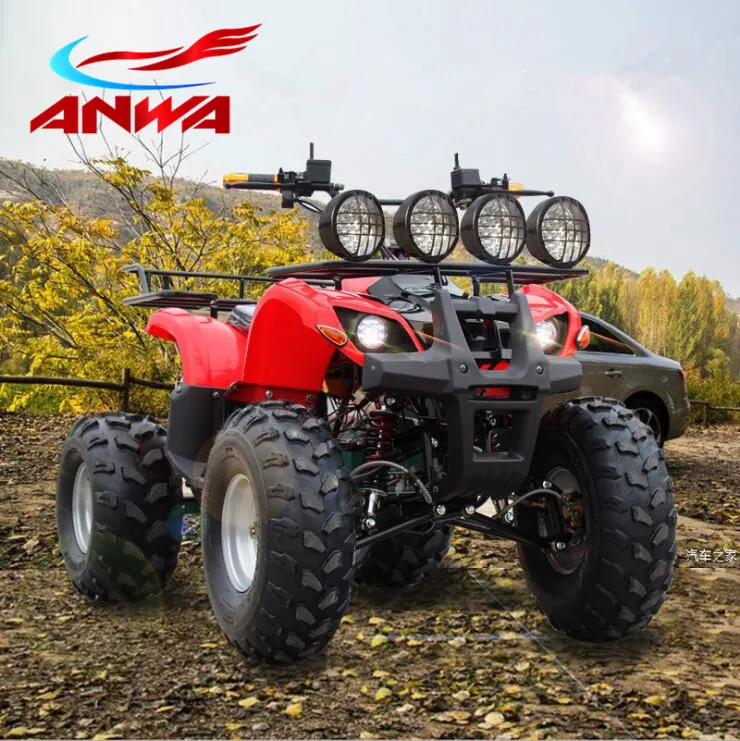
American Polaris is also a quality, hard-working brand. The engines have high traction performance and a degree of safety.
In recent years, many Chinese manufacturers have appeared on the market, attracting with their price. Despite the fact that China is advancing and improving quite quickly in the production of any goods, nevertheless, it is still inferior in quality to top brands. Parts for such ATVs are cheap and affordable, but, most likely, the need for them will arise more often than after buying the same Bierpie.
When choosing a good ATV, pay attention to the main performance characteristics, namely:
Engine size. For hunting, fishing, sports, driving on a dirt road, 150-230 cm3 will be enough. To dive into extreme tourism, you should choose a powerful engine of 350-689 cm3.
Power. For light riding or training, 13-15 hp will be enough for you. If the plans are full-fledged trips through the endless impassability of our Motherland (and we mean mountains and forests, not cities in the middle zone), then you should put a pony with a capacity of up to 45 horsepower in a stall.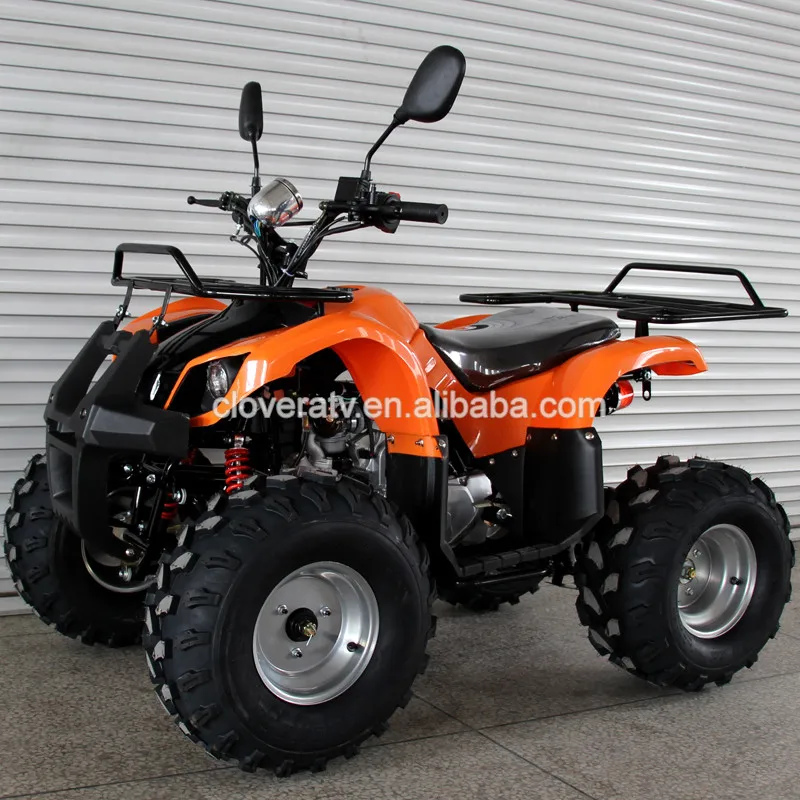 It is horse, not pony.
It is horse, not pony.
Transmission. Mechanical - suitable for moving on more or less flat roads, as it requires attention when switching gears.
CVT - suitable for hunting or fishing, where in manual mode it is necessary to switch gears only in loose areas or when encountering obstacles.
Automatic gearbox. She controls the speeds depending on the engine speed and road conditions. You can focus entirely on the route or immerse yourself in the performance of a sports stunt.
Cooling system. You should not allow the engine to overheat, which means you need to choose the right cooling system for your needs. The air type is suitable for lighter fishing or hunting trips, for example. If everything is hardcore for you, then it is better to choose a fluid system that will provide the quadric with more heat transfer, and you will have peace of mind during extreme recreation.
Well, the last, but the main advice.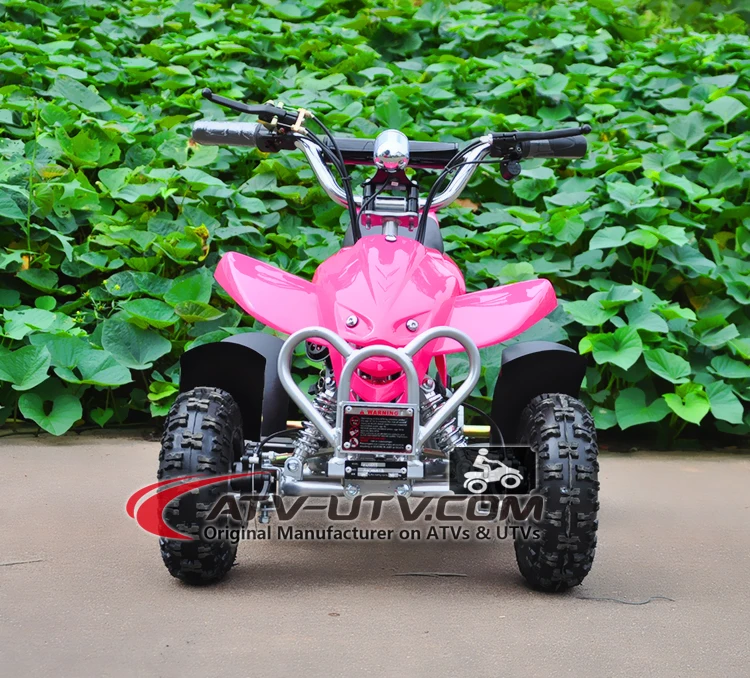 Before choosing an ATV, think carefully for what purpose you need it: sports, walking or extreme riding. It depends on the amount you invest. Better yet, first rent an ATV a couple of times and understand whether you will ride it from time to time or whether you claim to be a quadro-maniac. In this case, of course, it is worth buying your own transport, but you also need to approach the choice more carefully - you will need more than five tips.
Before choosing an ATV, think carefully for what purpose you need it: sports, walking or extreme riding. It depends on the amount you invest. Better yet, first rent an ATV a couple of times and understand whether you will ride it from time to time or whether you claim to be a quadro-maniac. In this case, of course, it is worth buying your own transport, but you also need to approach the choice more carefully - you will need more than five tips.
And if you do not want to delve into the intricacies of choice and want to immediately get a good ATV that meets your needs, then you can always turn to specially trained people who, for some fee, are engaged in the selection of auto and motorcycle transport. As a rule, these are well-versed people who know the design of an ATV, have information about new products and have all the necessary technical means that can identify all the shortcomings of a vending instance.
But whatever your goal when buying an ATV, be prepared to shell out a tidy sum for the transport itself, accessories, equipment and storage space.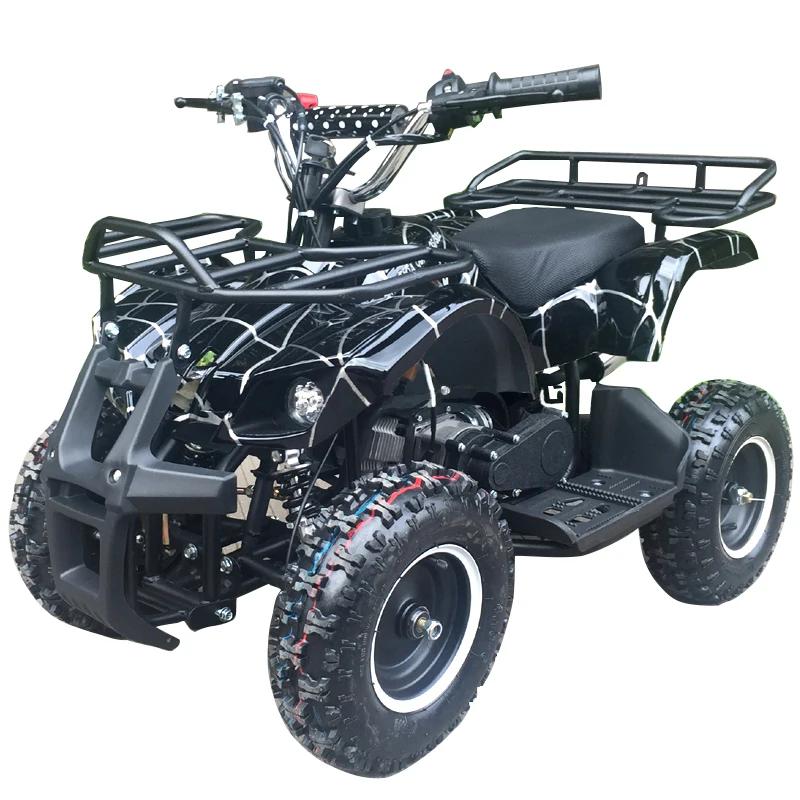 If you have a small one-car garage, then it is worth considering an alternative shelter for the ATV, where it will live quietly and not interfere with you during your daily use of the car.
If you have a small one-car garage, then it is worth considering an alternative shelter for the ATV, where it will live quietly and not interfere with you during your daily use of the car.
A garage 3-4 meters long is suitable for an ATV. As with any vehicle, the roof and walls must be airtight. In order for it to serve you for more than one year, you should pay attention to iron garages. They are not only durable, the formation of mold and guests in the face of rodents is excluded. The SKOGGY metal garage is designed just for storing equipment such as an ATV. It is made of the professional sheets processed from corrosion. The roof does not leak, the installed drains remove all the consequences of precipitation, just do not forget to periodically clean it from leaves, sticks, birch buds and other debris.
The collapsible design will allow you to move the garage from place to place, unless of course there is a need for this. You never know, suddenly you decide to move on your ATV to another house. You can take the garage with you. Yes, and if you are planning a rearrangement on your site, a couple of hours - and the garage is dismantled. We rested, decided on a new place, another hour or two - and the garage for the ATV is already in a new place.
You can choose a collapsible garage design from profiled sheets, or you can choose a frame one. In the second case, the garage is also collapsible, but the frame is assembled before sheathing with corrugated board. Gates can be made ordinary swing or use roller shutters. It is possible to install a gate in any part of the garage.
And for connoisseurs of the coolness of not only an ATV, but also its keeper, you can apply the most brutal print.
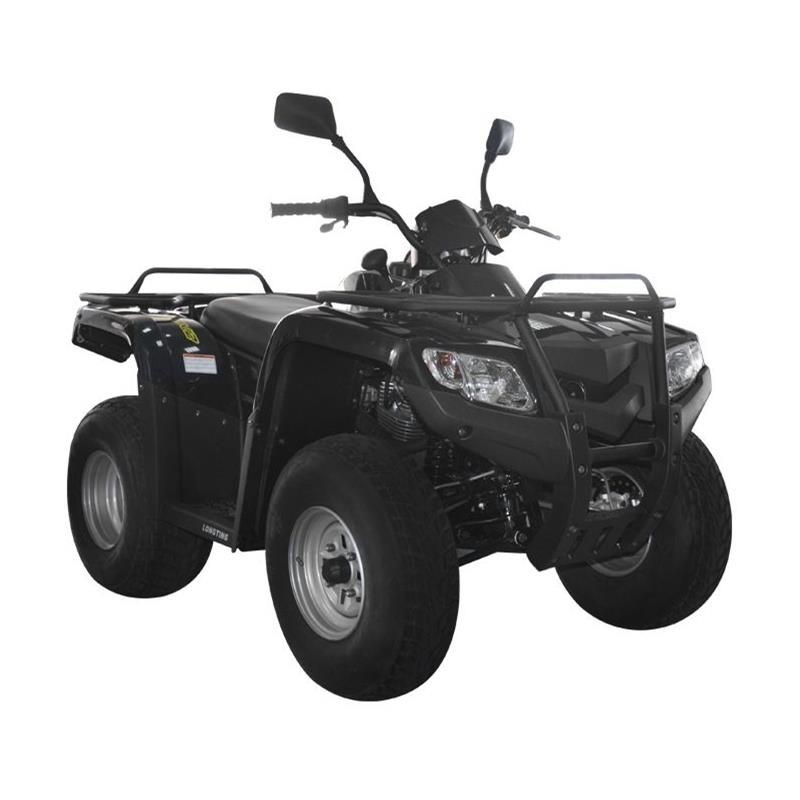 The traffic police inspector has the right to stop you and check the documents.
The traffic police inspector has the right to stop you and check the documents. Modern children are immersed in the world of phones, smartphones, set-top boxes, tablets and other gadgets, the name of which is not always familiar even to an adult. Outdoor games and walks have indeed become a rarity, and family trips even more so.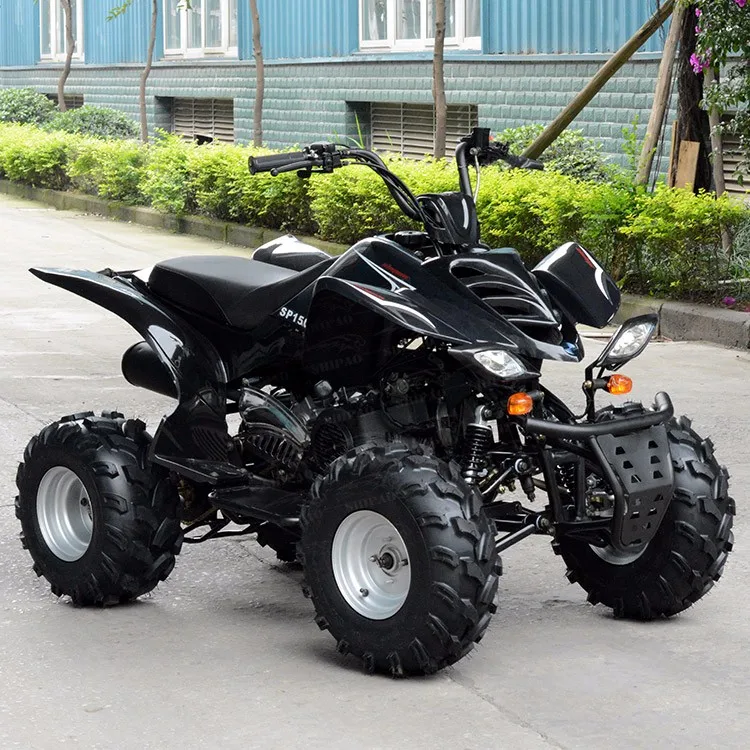 You ask the children why? .. Boredom - they will answer. We propose to solve this difficult problem.
You ask the children why? .. Boredom - they will answer. We propose to solve this difficult problem.
Buying an ATV for a child is not an easy task, perhaps, it is much more difficult than buying a loved one for yourself. The rule does not work here more and more powerful - it means better. In the buying process, there are many factors that must be taken into account influencing your final choice.
The first thing to decide before you even consider buying is whether you and your child are really ready to own an ATV. If you, as a parent, are mentally and emotionally prepared for the fact that any vehicle, be it a bicycle, a scooter, and even more so an ATV, is inherently an additional source of danger and possible injuries, and your child is aware of the risks associated with riding an ATV - then let's go ...
The age of children who are interested in four-wheeled vehicles ranges from three years to ten years and older.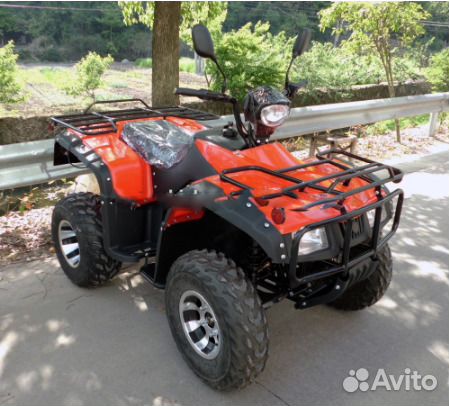 Of course, three years is very little, nevertheless, even for this age group there are excellent, high-quality, affordable four-wheeled units, something between a car on the control panel and a full-fledged ATV. Driving at such a young age is very beneficial for your child's development. Motor skills, reflexes, and quick decision-making skills are improved. Therefore, if you solve safety problems and purchase the necessary equipment, which we will discuss below, then buying an ATV for children is a great solution.
Of course, three years is very little, nevertheless, even for this age group there are excellent, high-quality, affordable four-wheeled units, something between a car on the control panel and a full-fledged ATV. Driving at such a young age is very beneficial for your child's development. Motor skills, reflexes, and quick decision-making skills are improved. Therefore, if you solve safety problems and purchase the necessary equipment, which we will discuss below, then buying an ATV for children is a great solution.
For the youngest pilots 3 to 6 years old we recommend that you purchase only electric quad bikes for safe operation and never petrol ones. A single 12V battery for a 3 year old will suffice, and as they get older and get closer to 6 years old, look into ATVs with 24V batteries.
In addition, when buying, you must take into account the recommendations of specific manufacturers for age, which they give depending on the characteristics of a particular model they produce.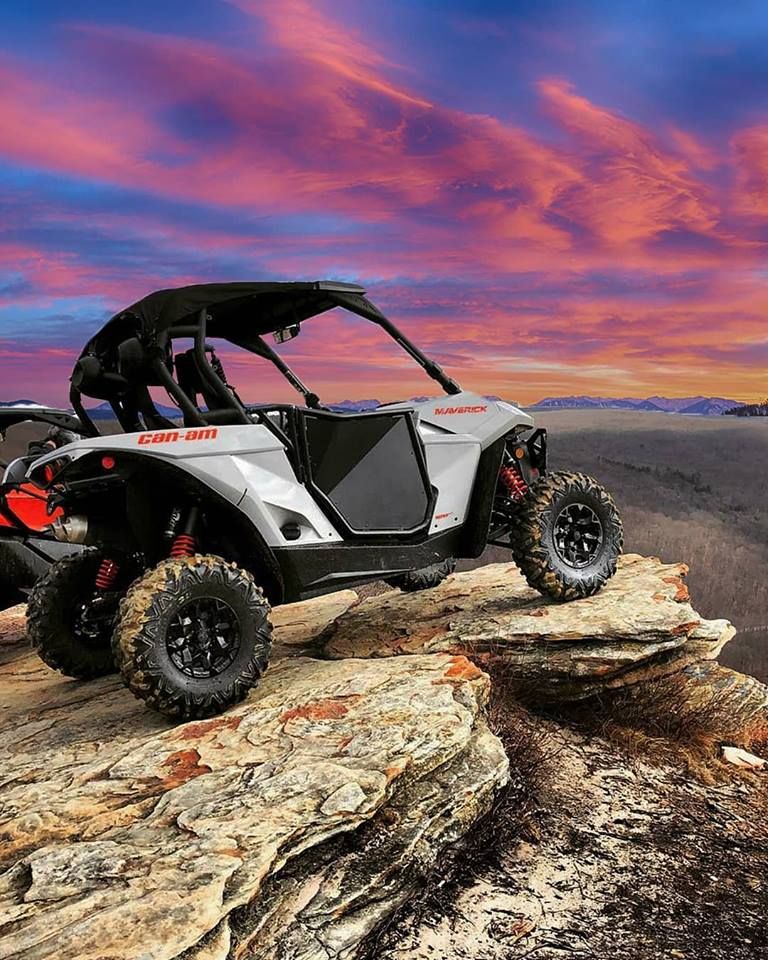 Do not forget about the individual physical development of your child, as well as previously acquired skills and experience in driving a bicycle, scooter and other “vehicles”.
Do not forget about the individual physical development of your child, as well as previously acquired skills and experience in driving a bicycle, scooter and other “vehicles”.
Also read: How to choose a children's electric car - advice for parents
The purchase of a gasoline ATV should be considered as an alternative to an electric one for an older child aged 6 to 10 years. At the same time, do not forget that he is still a child, so choose vehicles with an engine capacity of 50 cm3, a maximum of 70 cm3, if the child had a positive driving experience and everything worked out fine for him.
Pilot age 12-15 70-90 cm3. ATVs with an engine capacity over 90cc are intended for young people 16 years of age and older and are not recommended for purchase before this age.
Please note that if your child is small for their age, these recommendations will change slightly. Children must be able to reach all controls, be able to grab the brake with their hands, and touch the foot brake and gear shift (if you choose manual transmission)
The weight of a four-wheeled vehicle must be appropriate for the child's age and physical development. It is very important that he, without resorting to the help of adults, could himself maneuver it if necessary. Be careful with this setting, because if a child is too young to operate a heavy ATV on their own, this can lead to accidents and injuries. For reference, you can take the following weights of ATVs depending on age:
It is very important that he, without resorting to the help of adults, could himself maneuver it if necessary. Be careful with this setting, because if a child is too young to operate a heavy ATV on their own, this can lead to accidents and injuries. For reference, you can take the following weights of ATVs depending on age:
In order to make the right choice of ATV, let's pay attention to the main differences, features and advantages of each of these types.
Two-stroke and four-stroke models are available on the gasoline ATV market. Two-stroke ATVs - suitable for children from 3 to 10 years old. These models are safe, ergonomic, have a small mass and develop a speed of no more than 25 km / h. The speed limiter allows parents to set the maximum threshold themselves. Four-stroke ATVs are more powerful models with extra controls and are designed for older kids.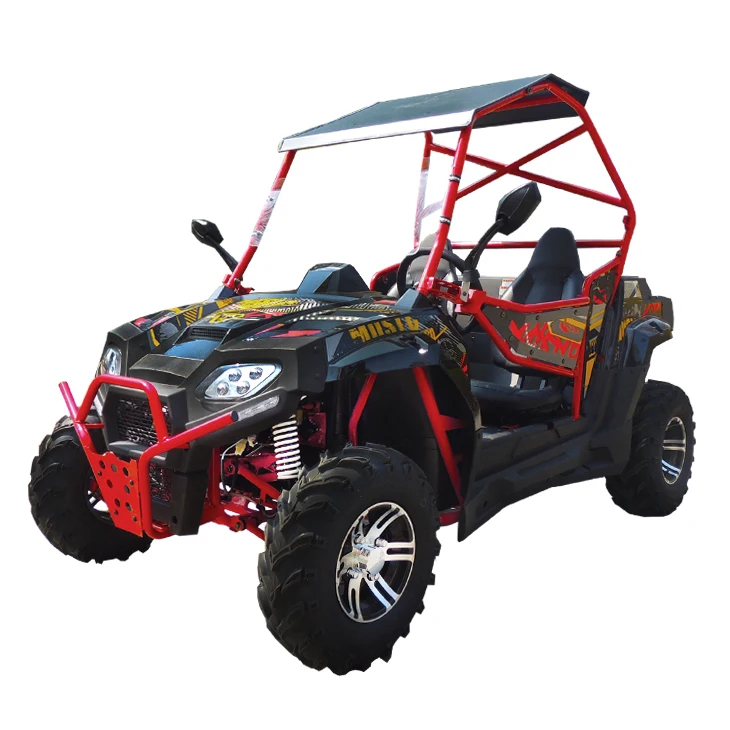 Petrol quads are usually equipped with a 4-5 liter fuel tank, which is enough for long trips over rough terrain, which is undoubtedly a huge plus. However, here lies the disadvantage of gasoline models - this is the presence of exhaust gases, which excludes the possibility of driving indoors.
Petrol quads are usually equipped with a 4-5 liter fuel tank, which is enough for long trips over rough terrain, which is undoubtedly a huge plus. However, here lies the disadvantage of gasoline models - this is the presence of exhaust gases, which excludes the possibility of driving indoors.
Electric quads are cheaper than petrol quads and an electric quad is not designed for long walks, because there is a high probability that the battery will run out at the wrong time, and pushing it home is not the most pleasant entertainment.
Electric ATVs also have a huge plus - it is the ability to ride in any enclosed space, even around the apartment, if the area allows, and even when the grandmother is sleeping - after all, our electric friend is environmentally friendly and almost silent.
We hope the above differences and features will help you make the right decision whether to buy a petrol or electric ATV. We remind you once again that you must take into account the age of your child, and especially if he is from 3-6 years old.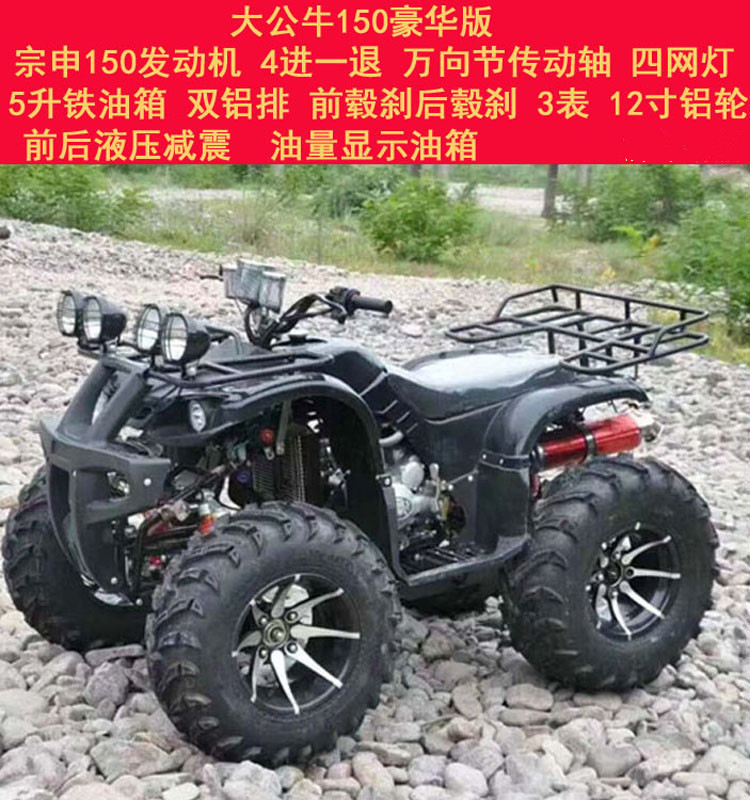 In this case, for safety reasons, we would recommend to pay attention to the electric model.
In this case, for safety reasons, we would recommend to pay attention to the electric model.
So, we finally decided on the type of ATV, its size and power. Here he stands in front of us, a new, shiny handsome man, the right color, size, and we are ready to part with the money. Let's not rush and pay attention to some important little things and the equipment of the ATV we have chosen. A high-quality and safe product must be equipped with:
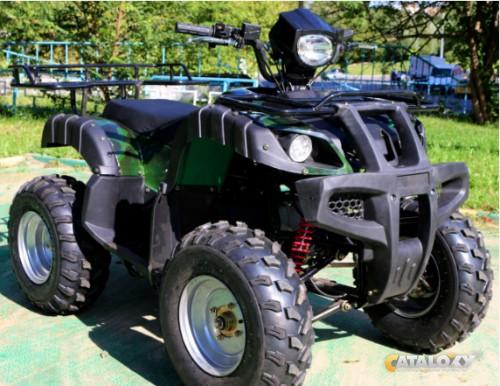
Before you allow your child to drive an ATV, you must assess the child's physical, mental and emotional state. Moreover, it is desirable to do this every time the ATV is used.
Physical condition. Is your child big and strong enough to ride an ATV? The child must be of sufficient height to stand on the floor and reach the controls while seated.
Mental state . Assess if the child knows the basic ATV safety rules and is mature enough to understand that safety matters.
Emotional state . Some children are very emotional, and this can lead to disastrous consequences. Strong emotions such as anger, excitement, or others can affect a child's ability to safely drive a four-wheeled friend, so do not let him drive if he is not calm and emotionally stable.
Some will want to skip this section, they say, what's new can be said ... I already know everything, I remember, I can. You may know and remember and know how, but your child has no idea. Sit down and read together the last and probably the most important part of the article.
So, the most important part of the puzzle is choosing the right protective equipment. Equipment is necessary to reduce the risk of injury in the event of a fall or breakdown of the ATV. Properly selected equipment is the key to keeping your child safe. If you think that a helmet is optional just because your child rides on four wheels, then you are wrong. According to statistics, the main injuries associated with the use of ATVs are head injuries.
In addition to the helmet, you will need goggles, gloves, elbow and knee pads. And now more about each position.
We recommend purchasing a full-face safety helmet with a visor.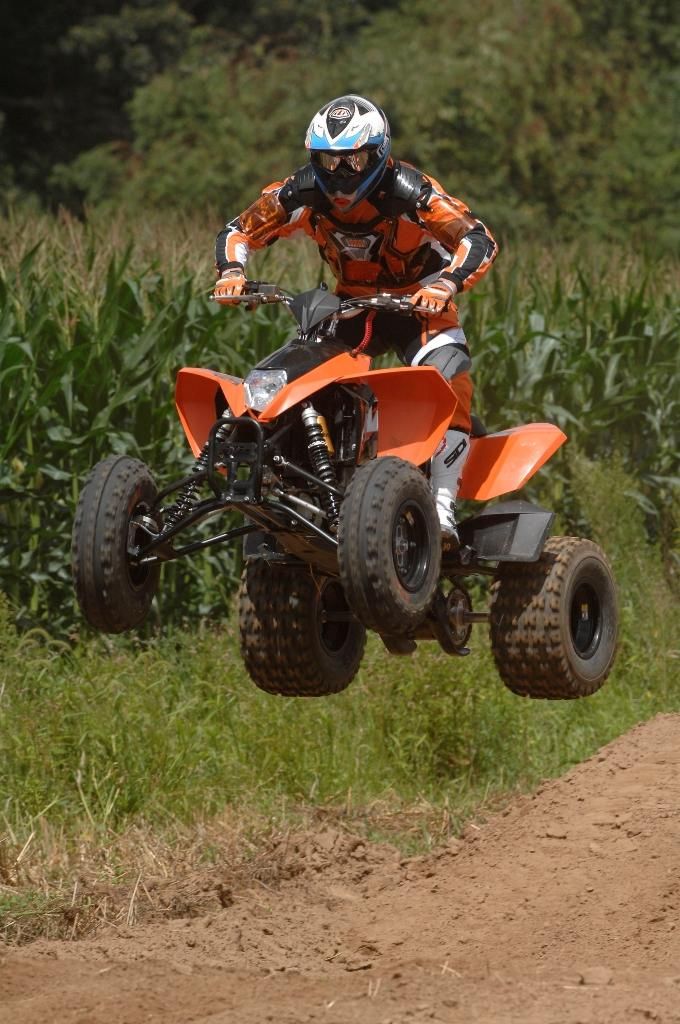 A bicycle helmet or any other helmet not designed for off-road use is not a complete replacement.
A bicycle helmet or any other helmet not designed for off-road use is not a complete replacement.
Goggles should always accompany a full face helmet for added protection. Glasses obviously protect your child's eyes. You should not buy glasses that are too tinted, as this will impair visibility in low light conditions or in cloudy weather.
Gloves protect your child's hands from blisters, chafing from constant vibration of the steering wheel. Gloves are especially relevant if you prefer rough terrain for walking. They will also protect your fingers from being hit by tree branches and bushes when riding on narrow trails.
There is nothing special to write here, everyone understands why this equipment is needed. An excellent alternative to knee pads are special high boots with shin guards. In addition, we advise you to use tight trousers, of course, there are specially designed for athletes with leather inserts and other bells and whistles, but simple jeans will be enough for a child.